South of Rock Springs, Wyoming, the highway pitches, heaves, and descends into the little hamlet of Dutch John, Utah. Dutch John was once a company town that housed the workers who built Flaming Gorge Dam in the 50s and 60s. But it’s now populated with fly fishing guides, whitewater rafters, and people who work in the hospitality industry. It’s abuzz with activity as fishermen and river rats assemble every morning in the summer to launch their crafts and drift through the deep, reddish canyonlands to fish the Green River.
Ponderosa and pinyon pines crowd the steep banks, and willows grow head-high along the 7-mile fisherman’s trail that goes from Section A, where the first put-in is located, to Section B, at Little Hole, where the majority of floaters take out at the end of the day.
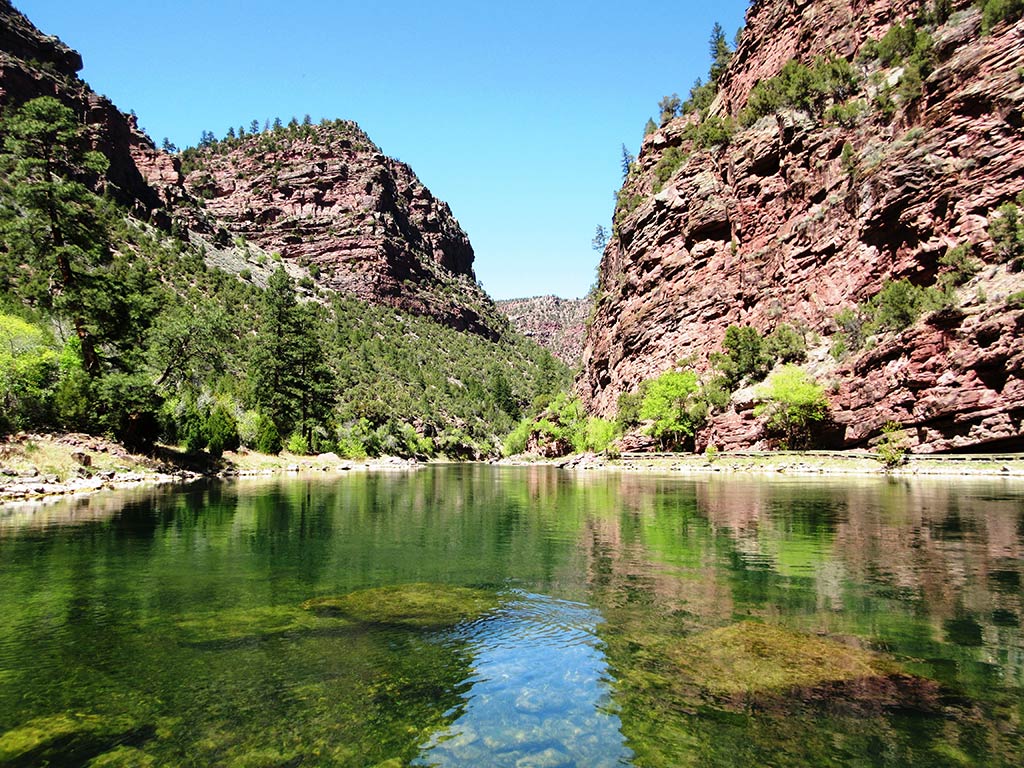
Over the decades, I’ve made the pilgrimage to Dutch John to fish the “mighty Green.” Though I live in Casper, where our beloved North Platte cuts right through downtown, I drive the 5 hours to Utah every so often to check in on the Green. Known for its emerald waters and ridiculous Trout populations (conflicting information claims that the river holds anywhere from 6,000 to 15,000 Trout per river mile), the Green River offers something different. For one, the whole river is accessible and located on public land. Add in the interesting rock formations, the ospreys and hummingbirds, and its proximity to national treasures such as Dinosaur National Monument and Flaming Gorge Reservoir, and you have a unique location with something for everybody.
Dutch John itself is a funky Trout town with rustic cabins for rent, shuttle services, ice cream parlors, campgrounds, and fly shops that feature a well-traveled shop dog who’s free to come and go on her own schedule. Stop at one of the shops for advice on what flies are working and tips on how to fish them. Here you can buy your 3-day non-resident license ($44) and a daily parking pass ($5).
Summer Fishing on the Green River
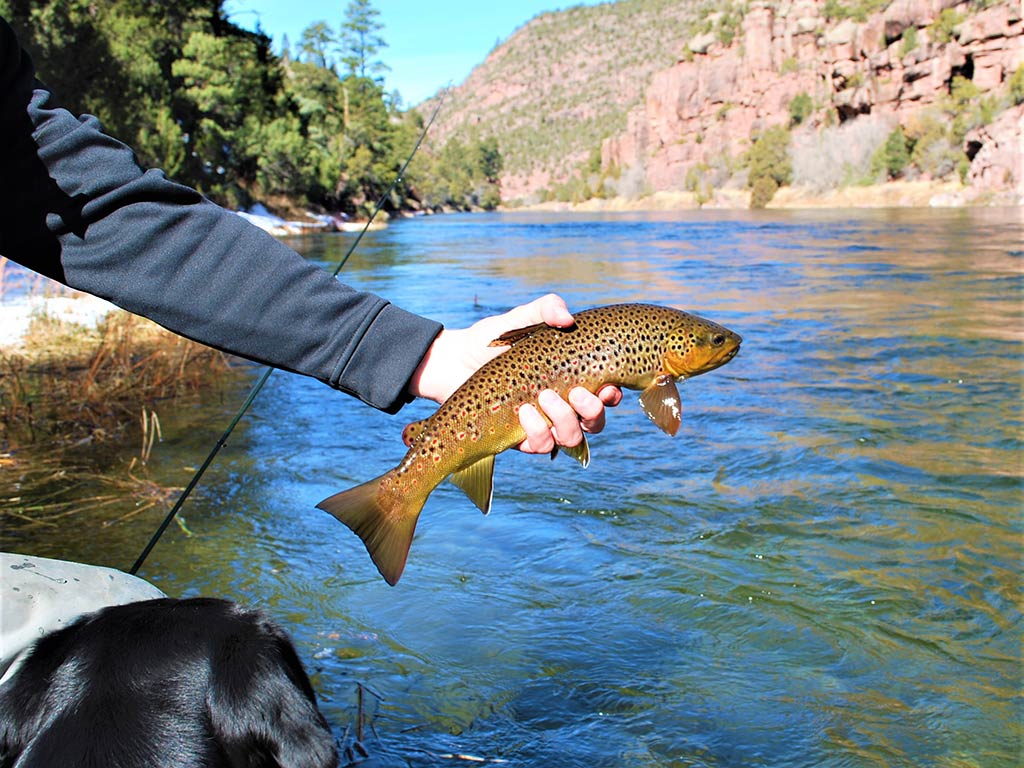
This summer, I decided to reacquaint myself with the Brown Trout of the Green River. I know of nowhere else in the world where your chances of a trophy Brown on a dry fly are better than section A below Dutch John. With my black Labrador, Henderson, I pulled into town and went directly to Trout Creek Flies, an establishment that has been here for three decades. The clerk, who said he’d been fishing the evening hatch below Little Hole, sold me some cinnamon-colored flying ants and tiny grasshopper patterns.
“Don’t bother with beetles,” he said. That surprised me, because in the past I used nothing but beetles and cicadas when I fished the Green River. But one thing I’ve learned to do over the years is to trust the clerks, especially the unkempt ones who look like they spend too much time fishing and not enough on hygiene!
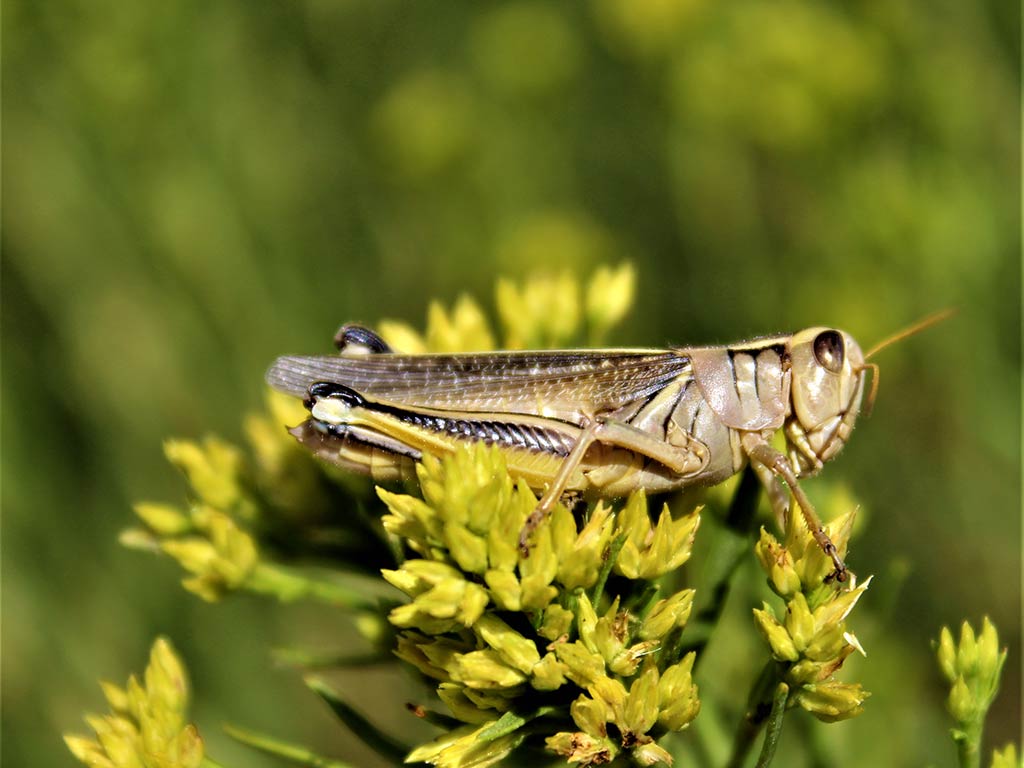
I set up my tent in the last available site at Dripping Springs Campground. Parking at the Little Hole overlook, I rigged up and descended into the canyon. It was late in the day and the river was dotted with rafters – whole families and various groups, who you can distinguish from fly fishermen as they’re given to eruptions of laughter, cheers, and hoots! They splashed each other with oars, cracked open cans of beer, and seemed unaware that they were drifting over hallowed Blue-Ribbon water.
With flows approaching 2,000 CFS, the Green River was too strong for me to cross and fish the opposite bank. Nothing was rising. Hovering mid-current, several Brown in the 16-inch range were subsurface feeding in a rocky run. I lost most of my cinnamon ants to the willows behind me as I tried to get the perfect drift. The Trout weren’t interested! By late summer, the fish in the Green are well-educated – they’ve seen it all. Finally, out of desperation, I tied on a tent-wing caddis, placed it upstream, and a Brown Trout rocketed straight up to suck it down. A sunburned man floating by in an innertube hooted as the fish leaped three times and broke my leader.
And that was that. I didn’t get another bite. For a river with ridiculous numbers of fish, one seemed like enough. Soggily, I climbed back up to my truck.
October in Flaming Gorge
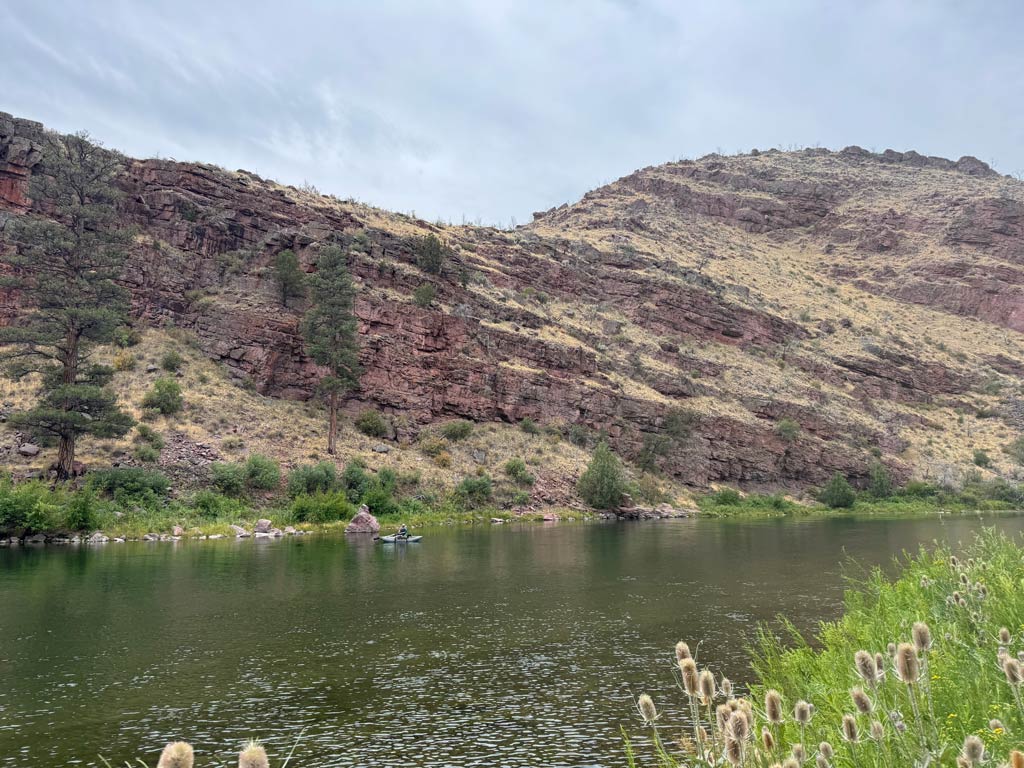
You could justify an autumn trip to the area just to witness the fiery sunsets over Flaming Gorge. The rafting companies have put away their trailers and stored their 8-man rubber rafts. River guides, having no clients, are listening to college football on the radio at the fly shop. The line at the ice cream parlor is nonexistent. Campgrounds are largely empty, which allows you the run of the place. But there’s still some action at the boat ramp.
With water flows down to 900 CFS, the Green River is a tamer version than the one you encounter in summer. And the willow-lined fisherman’s trail along the river is mostly devoid of other anglers.
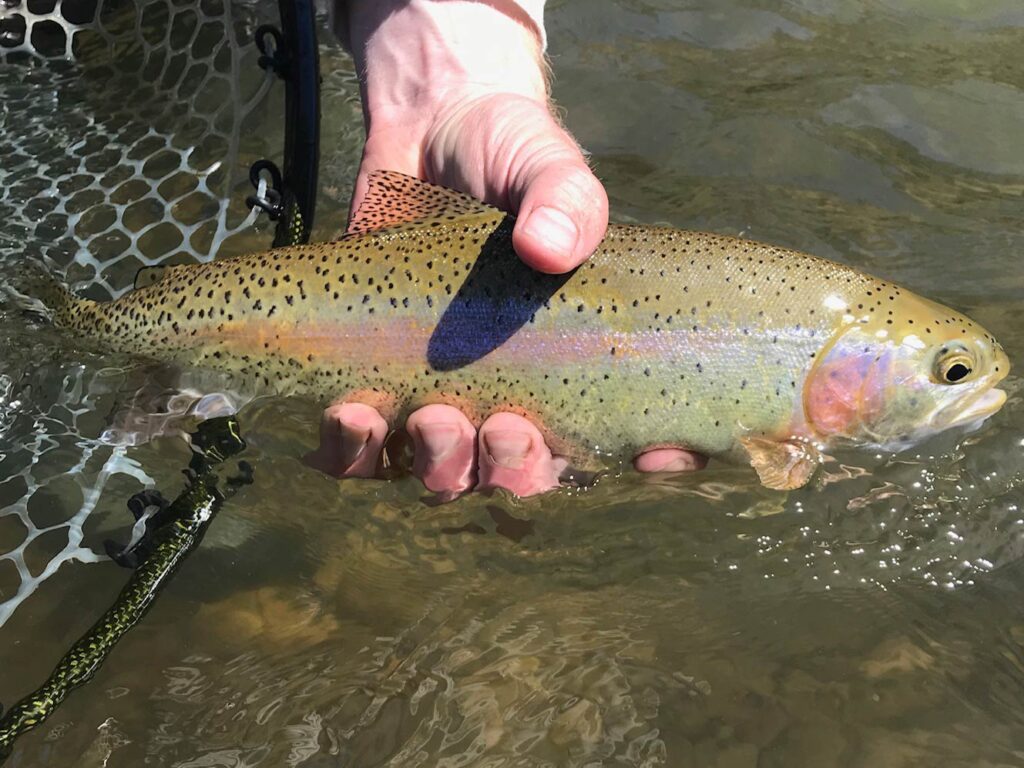
I quickly hoofed a half mile downstream and began casting a hopper pattern with a size 16 Copper John as a dropper. The little Browns and Rainbows couldn’t resist the dropper. Once, a large Brown – maybe 20 inches – came up to inspect the hopper. But he didn’t buy it, and sank away without taking the fly. I stayed in the same area for hours, until the sun began to slip into the canyon and shadows cast over the pool where I fished. I kept telling myself that if I kept at it, I might get one of the bigger fish I saw rising to midges. My Copper John was coming apart, so I paused to change flies.
I had my back turned to the pool when an adult osprey hit the water at full force. I was startled to the max. I might have even cried out. So I spun to see the great bird lifting heavily from the river’s surface… A 16-inch Rainbow in its talons! Back up the fisherman’s trail, I was 20 minutes to my truck when my heart rate finally started to slow. I kept thinking about that bird, the fish in its grip, and the silver coins of river water falling all around.
New Year’s Green River Fishing
Why drive hours to stand in a freezing river and cast to Trout? Why not?
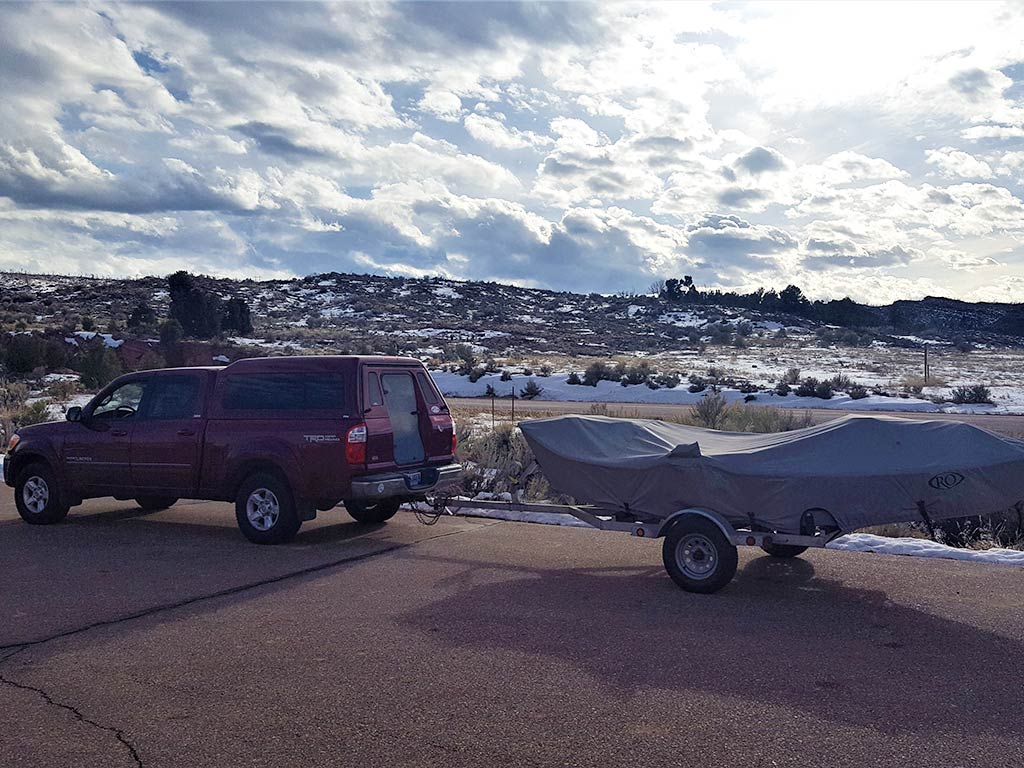
It was too cold to camp, so two of us rented a cabin at one of the nearby resorts. (I use the word “resort” lightly!) The cabin featured a bed and a pull-out couch. Luckily, it allowed dogs. We had heat, a place to warm up, and a kitchen to cook moose fajitas, as my friend had been successful on a once-in-a-lifetime moose hunt and now had to work through nearly 300 pounds of meat.
We waited until almost 9 a.m. to launch his drift boat, as we wanted the sun on the water. And we signed up for the 7-mile A section, thinking that if the fish weren’t biting, we could row on through and be done in a few hours.
But the fish were biting. Big Browns were hitting articulated leeches, the Montana streamers that have become popular lately. I was using a black Peanut Envy while my friend Dave was using an olive Circus Peanut. Though we didn’t know what we were doing, our method involved anchoring the skiff upstream from a deep pool and stripping the leeches through the deep water. We could see shoals of Trout. And I began to believe the 15,000 fish per mile statistic offered on the internet!
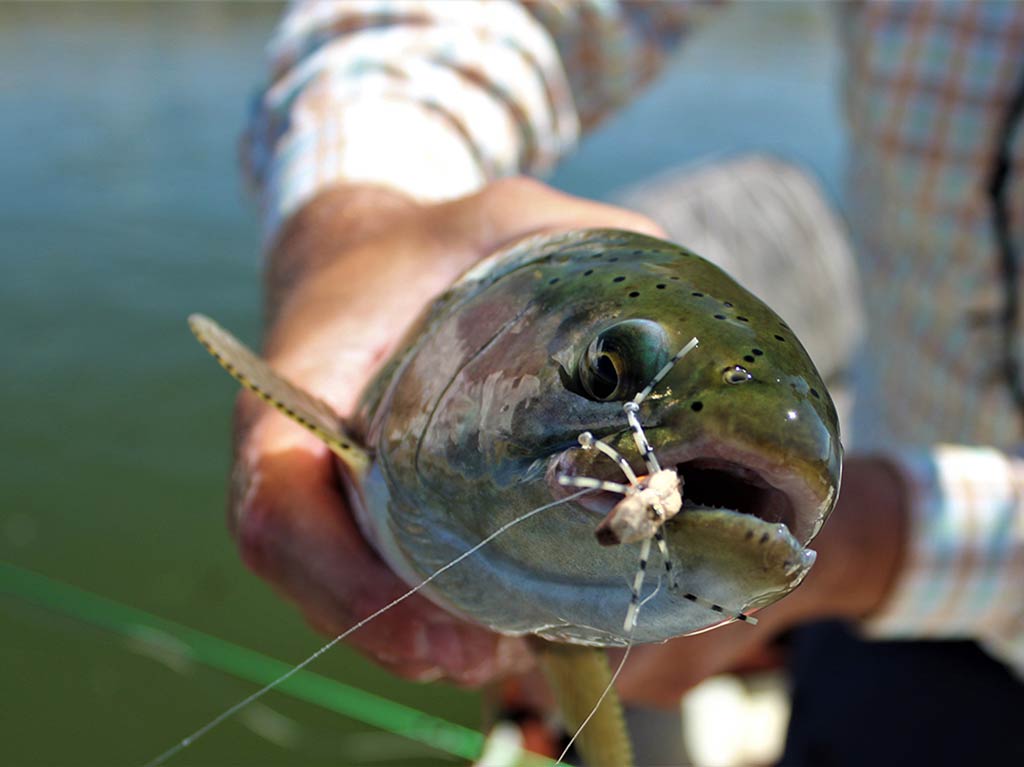
We improvised a method where we’d cast into the river, strip out the line, and steer the streamer into the dark pool. Twice, I saw fish break from the school and chase down the fly as it dangled in their faces. But mostly, you’d just feel a deep, enduring pull on the end of your line. We lost count of how many fish we landed and lost. We exhausted our supply of Circus Peanuts.
When we got to the take-out, it was so dark that Dave had to use his headlamp to see. I found my keys on the back wheel of my truck and backed the trailer into the icy ramp. We were bone-chillingly cold, but all we could talk about was how we might find some more articulated leeches and how we might do the same thing the following day.
Springtime: Green Grass on the Green River
The week after Easter, I found myself walking along the fisherman’s path on the Green. The crowds were manageable, but it seemed like so many of us had endured such a tough winter that when the weather broke, we all had the same idea: get to the Green and cast dry flies.
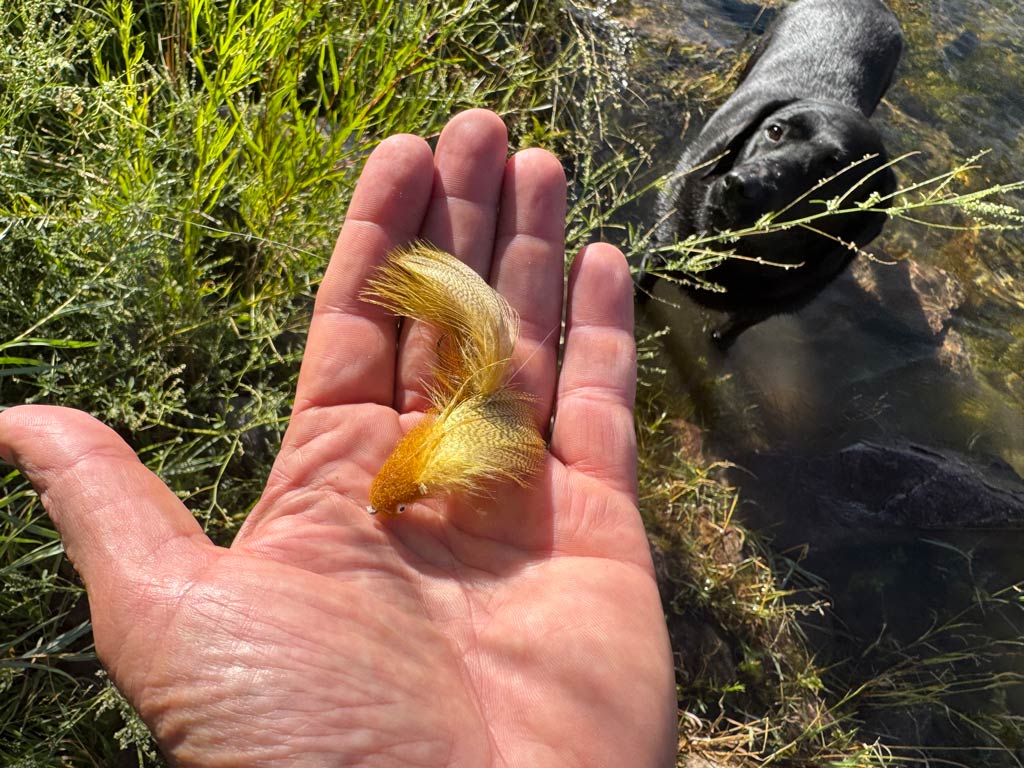
There was a blue-winged olive hatch coming off and, of course, midges in the foamy back eddies. Henderson was with me, crowding in when I tried to stand on a rock that wasn’t big enough for the both of us, dashing ahead and checking on other fly fishermen – even giving some of them a scare, as he can resemble a black bear at times! We crept along and had a few shots at big Browns that were finning in the obvious pools. But after one or two casts, these wise fish faded back into the current.
I was too early for the cicadas. Too late to do much with streamers. Everyone was saying the same thing. The fish were being finicky, but if you stuck with it, you could get a few.
“I’m just glad to be out of the house,” said a guy from Rock Springs. He and I bonded over the cruelty of the most recent winter.
I found a bend where I could see more than a dozen fish gliding over the rocky riverbed. These fish occasionally moved out of their lanes to grab something. I couldn’t tell what they were feeding on, so I tied an Adams size 16 – the most basic dry fly ever invented. I began casting, just enjoying the feeling of sunshine after so many dark months. Ignoring the shapes of fish in the run, I just cast. And cast. I didn’t change flies or even try a dropper.
Henderson grew bored and went to sleep in the dust of the trail. Fishermen came by, their nets catching in the willows, their faces red at having walked up and down the river all day.
Finally, a Trout rose and took the Adams. I’d been at it for hours, casting the same fly over the same fish. It surprises me how quickly things can change – for no apparent reason – on a big river like the Green. I thought maybe it was some sort of aberration. But on the next cast, another fish struck the fly. Henderson woke and came to stand beside me. I moved to a bigger rock so we could share it. The Adams began to do its work. The fish rose to it with reckless abandon. And just like that, a humdrum day’s fishing on the Green River became something else entirely.
Have you ever been fishing on the Green River? Which seasons do you prefer? Any tips or tricks you’d like to share? We’d love to hear from you in the comments below!
